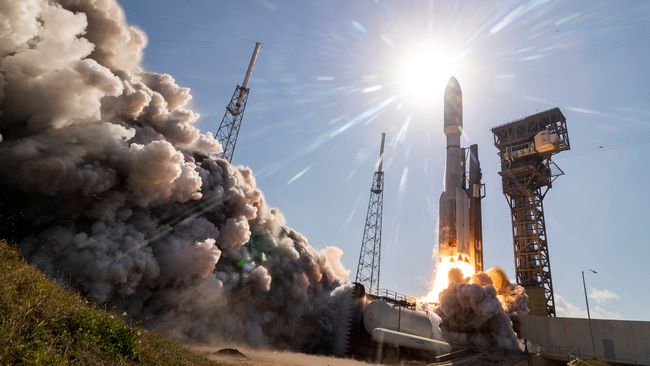

The first pair were designated USA-253 and 254, while the second pair are USA-270 and 271.
#ATLAS V RISING SERIES#
In addition to their own names and their launch designations, the GSSAP satellites in orbit have also been assigned numbers under the series of USA designations given to most US military spacecraft. The arrival of GSSAP-5 and 6 will restore the constellation to four satellites, although it is not clear for how much longer GSSAP-3 and 4 will be able to remain in service as they are only one year younger than GSSAP-1 was when it was withdrawn.

GSSAP-2 joined it in retirement in early October. The USSF-8 launch comes shortly after the retirement of the first two GSSAP satellites, with GSSAP-1 being decommissioned and moved to a “graveyard” orbit above the geostationary belt around the start of last February. Prior to the program’s transfer to Space Force, the USSF-8 mission was to have been designated AFSPC-8. Another pair of spacecraft were launched by another Delta IV rocket in August 2016 as AFSPC-6. The twin satellites were carried aloft by a Delta IV M+(4,2) rocket which deployed them and their ANGELS co-passenger, close to geostationary orbit. At this point, GSSAP was a US Air Force program, with the formation of Space Force over five years in the future. The first GSSAP launch took place in July 2014, designated AFSPC-4 (Air Force Space Command 4). Each satellite is powered by a pair of deployable solar arrays and are capable of maneuvering on-orbit to set up inspection passes of other spacecraft.Ī pair of GSSAP satellites in orbit (Credit: US Space Force) This is a three-axis stabilized platform incorporating the systems that enable the satellite to carry out its mission. GSSAP satellites are manufactured by Northrop Grumman, formerly Orbital ATK, and are based on the lightweight GeoStar-1 bus.

This likely builds on the earlier experimental MiTEx (Microsatellite Technology Experiment) satellites which performed an array of experiments including satellite inspections during their time in geostationary orbit in the 2000s.Īlongside GSSAP, a series of demonstration missions are being undertaken to further improve the capabilities of so-called “space situational awareness” satellites, including the ANGELS (Automated Navigation and Guidance Experiment for Local Space) satellite that shared a ride to orbit with the first two GSSAP spacecraft, and the Mycroft satellite launched in 2018. With the deployment of these two satellites, the Space Force is continuing a program which has given them a new capability in recent years to study foreign satellites and monitor their operations in orbit. Friday’s launch, which is designated USSF-8 (US Space Force 8), is carrying the fifth and sixth satellites in this series. The GSSAP ( Geosynchronous Space Situational Awareness Program) is a US Space Force project using small satellites to inspect other spacecraft operating in geostationary orbit. Flying in its never-before-used 511 configuration, Atlas lifted off from Cape Canaveral Space Force Station at 2:00 PM EST (19:00 UTC) for a lengthy mission that injected the satellites into a near-geostationary orbit. United Launch Alliance carried out an Atlas V launch Friday with the third pair of GSSAP satellites for the US Space Force.


 0 kommentar(er)
0 kommentar(er)
